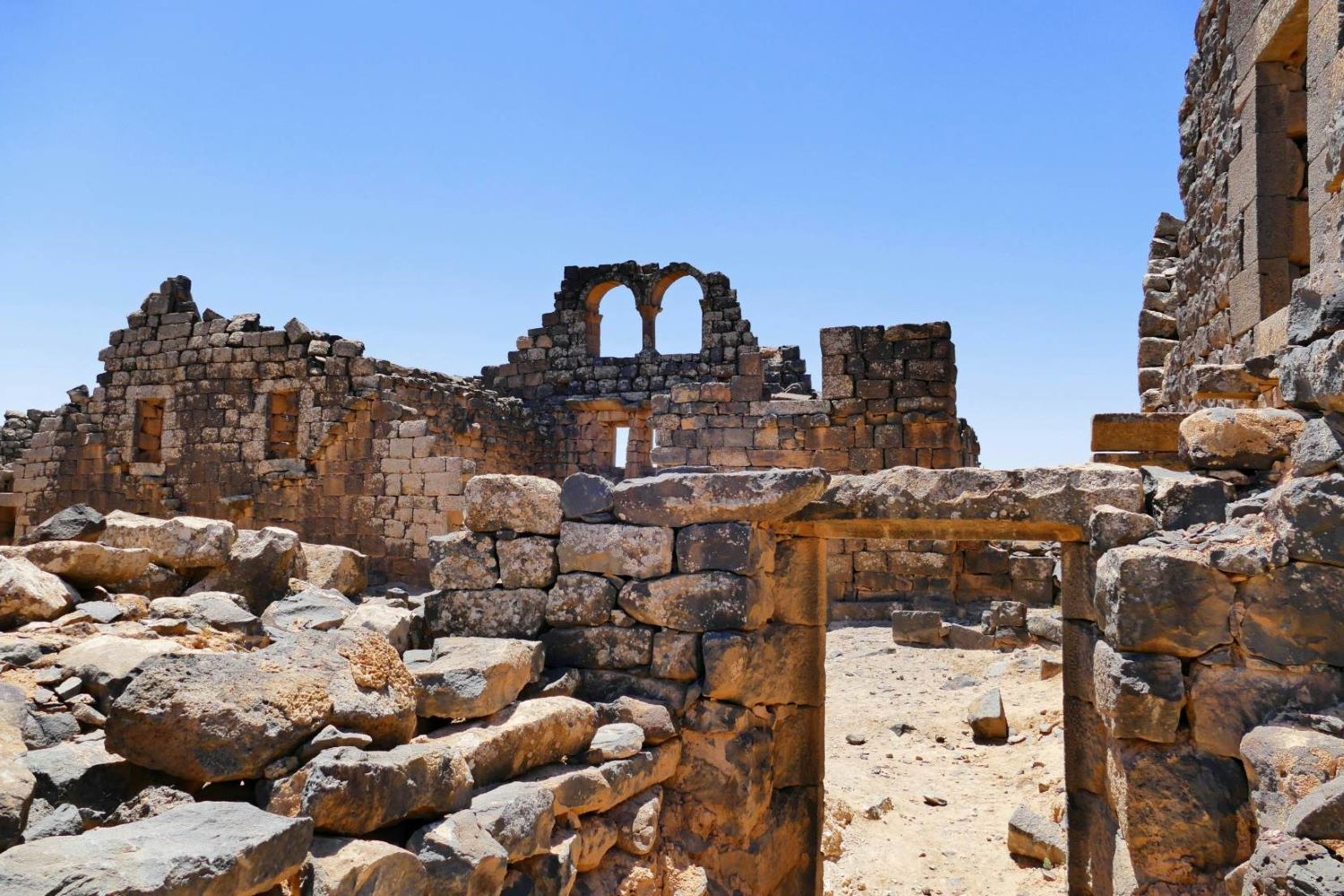
Umm El-Jimal is a hidden gem in Jordan, often overshadowed by Petra and Jerash. This ancient town, built from black basalt, offers a unique glimpse into the past. Why is Umm El-Jimal significant? It's a testament to the ingenuity of ancient civilizations, showcasing impressive architecture and water management systems. Visitors can wander through well-preserved ruins, including homes, churches, and even a Roman fort. The site also provides insights into the daily lives of its inhabitants, from the Nabataeans to the Byzantines. Whether you're a history buff or just curious, Umm El-Jimal promises a fascinating journey through time.
Ancient Origins
Umm El-Jimal, located in northern Jordan, is a site rich with history. Its origins date back to ancient times, offering a glimpse into the past.
- Umm El-Jimal was originally a Nabataean settlement, established around the 1st century AD.
- The name "Umm El-Jimal" translates to "Mother of Camels," reflecting its historical role as a caravan stop.
- The site features over 150 buildings, including homes, churches, and towers, showcasing diverse architectural styles.
- Archaeologists believe the town was continuously inhabited for over 1,000 years, from the Nabataean period through the Byzantine era.
Architectural Marvels
The structures at Umm El-Jimal are a testament to the ingenuity of ancient builders. These buildings have stood the test of time, offering insights into past construction techniques.
- Many buildings were constructed using basalt, a volcanic rock abundant in the region.
- The town's water system included underground cisterns and channels, demonstrating advanced engineering skills.
- Umm El-Jimal's churches feature intricate mosaics, some of which are still visible today.
- The site includes a well-preserved Roman fort, highlighting its strategic importance.
Cultural Significance
Umm El-Jimal holds cultural importance for various civilizations that once thrived there. Its history reflects a blend of influences from different periods.
- The town was a significant center for early Christianity, with several churches built during the Byzantine period.
- Umm El-Jimal was part of the Limes Arabicus, the eastern frontier of the Roman Empire.
- Inscriptions in Greek, Latin, and Arabic found at the site indicate a multicultural community.
- The town's decline began in the 8th century, likely due to changes in trade routes and natural disasters.
Modern Discoveries
Recent archaeological efforts have uncovered new information about Umm El-Jimal, shedding light on its past and preserving its legacy.
- Excavations in the 20th century revealed the town's extensive water management system.
- Researchers have used 3D modeling to reconstruct what Umm El-Jimal might have looked like in its prime.
- The site is part of the Umm El-Jimal Project, which aims to preserve and promote its historical significance.
- Local and international collaborations have helped protect the site from modern threats, such as urban development.
Visitor Experience
Today, Umm El-Jimal is a fascinating destination for history enthusiasts and tourists. Visitors can explore its ruins and learn about its storied past.
- The site is open to the public, with guided tours available to provide context and history.
- Information panels throughout the site offer insights into the significance of various structures.
- Umm El-Jimal is part of the Jordan Trail, a long-distance hiking route that showcases the country's diverse landscapes and historical sites.
- The nearby Umm El-Jimal Museum features artifacts and exhibits related to the site's history.
Preservation Efforts
Efforts to preserve Umm El-Jimal are crucial for maintaining its historical and cultural value. These initiatives ensure that future generations can appreciate this ancient town.
- The Umm El-Jimal Project focuses on conservation, education, and community engagement.
- Restoration work has stabilized many of the site's structures, preventing further deterioration.
- Educational programs aim to raise awareness about the importance of preserving cultural heritage.
- Local communities are involved in preservation efforts, fostering a sense of pride and ownership in their shared history.
Final Glimpse at Umm El-Jimal
Umm El-Jimal, a hidden gem in Jordan, offers a fascinating peek into ancient civilizations. Its well-preserved ruins and intricate architecture tell stories of a bygone era. From the impressive basalt structures to the intricate water systems, every corner of this site holds a piece of history.
Visitors can walk through the ancient streets, explore the ruins of homes and churches, and imagine life as it was centuries ago. The site's significance extends beyond its historical value; it also provides insights into the engineering marvels of the past.
For history buffs and curious travelers alike, Umm El-Jimal is a treasure trove waiting to be explored. Its blend of history, architecture, and culture makes it a must-visit destination. So, next time you're in Jordan, make sure to add Umm El-Jimal to your itinerary.
Was this page helpful?
Our commitment to delivering trustworthy and engaging content is at the heart of what we do. Each fact on our site is contributed by real users like you, bringing a wealth of diverse insights and information. To ensure the highest standards of accuracy and reliability, our dedicated editors meticulously review each submission. This process guarantees that the facts we share are not only fascinating but also credible. Trust in our commitment to quality and authenticity as you explore and learn with us.


